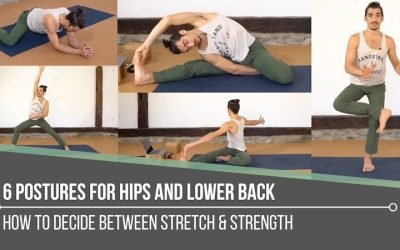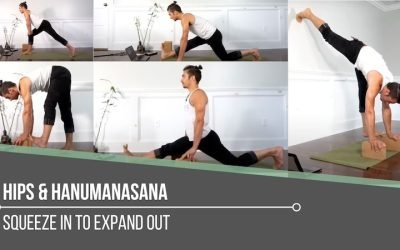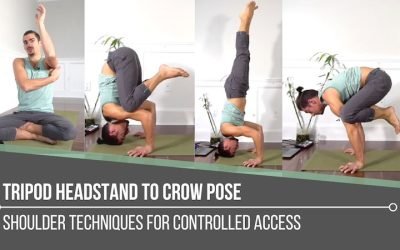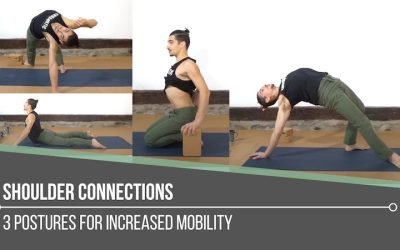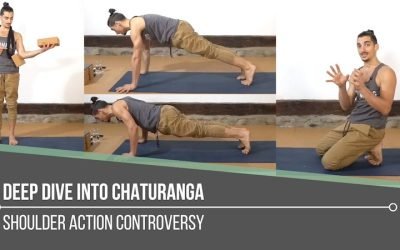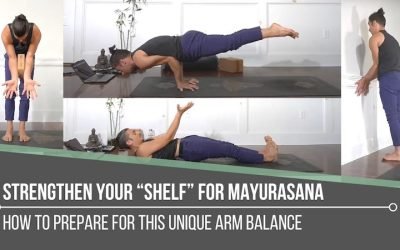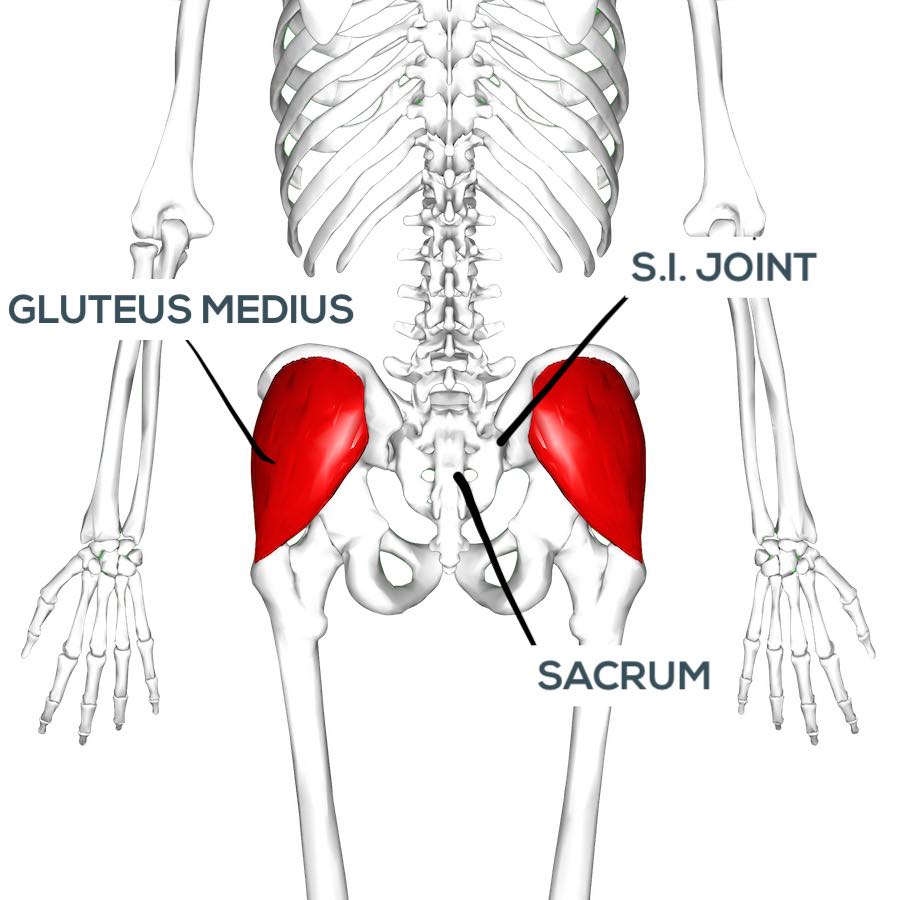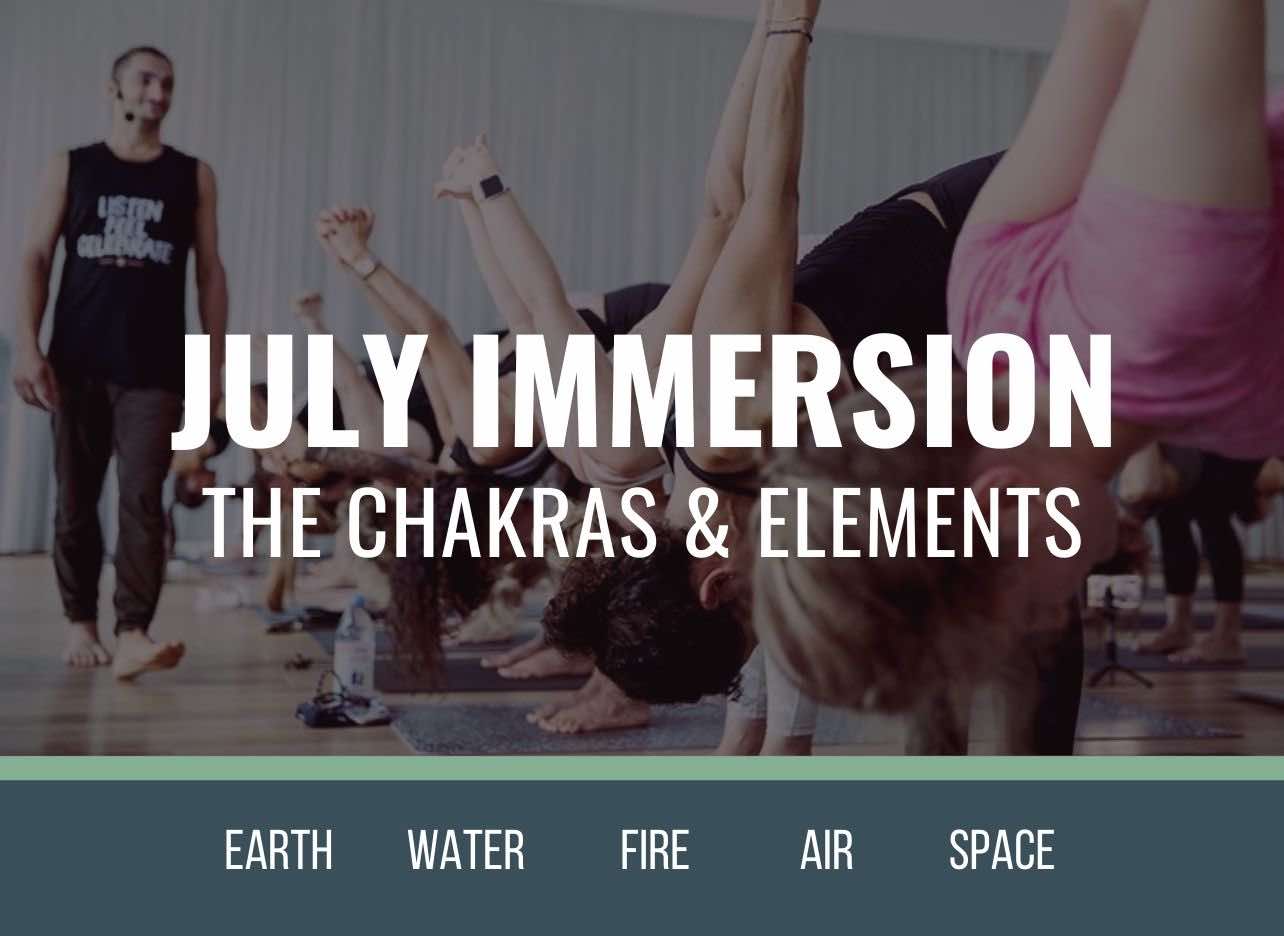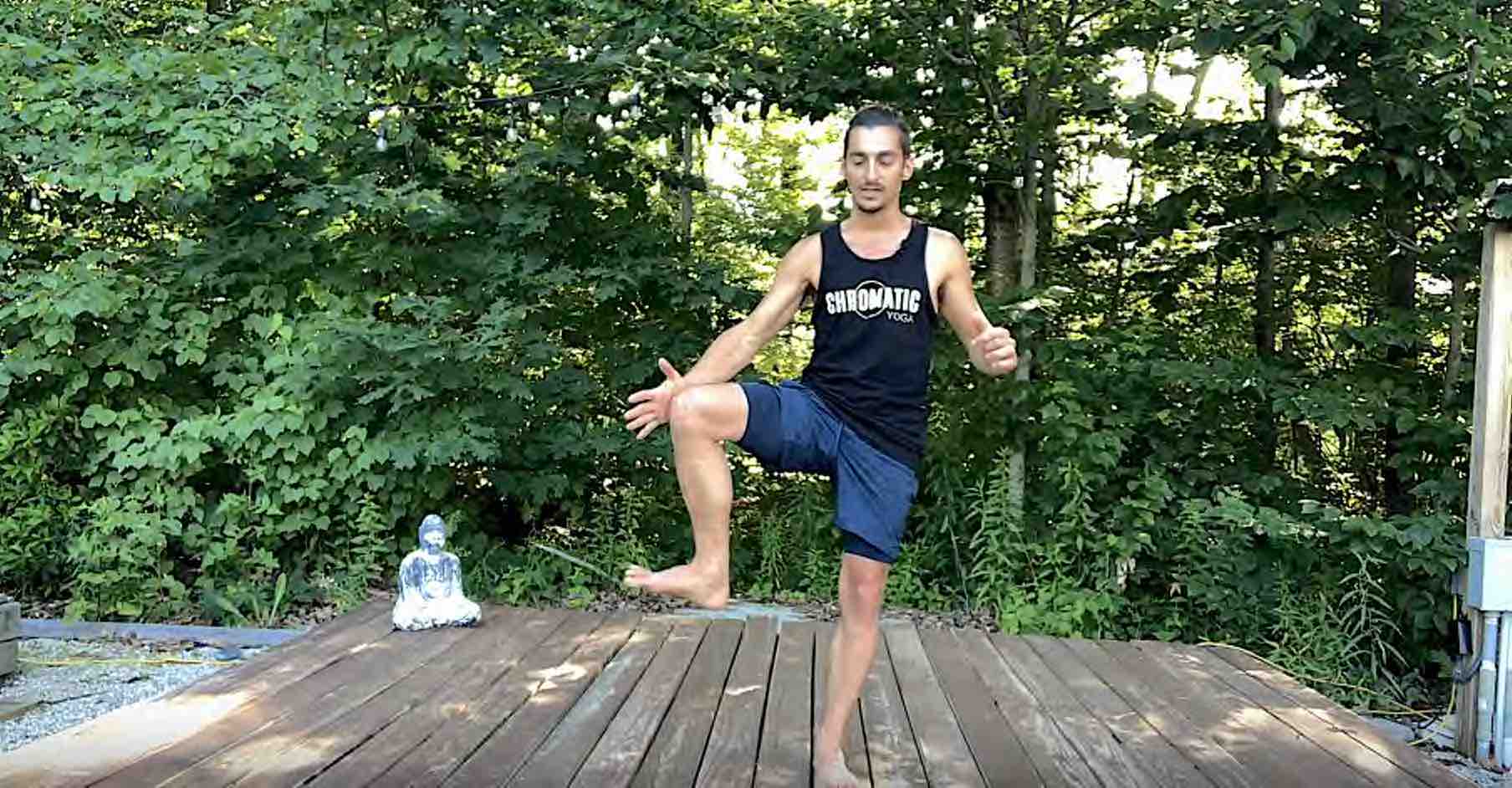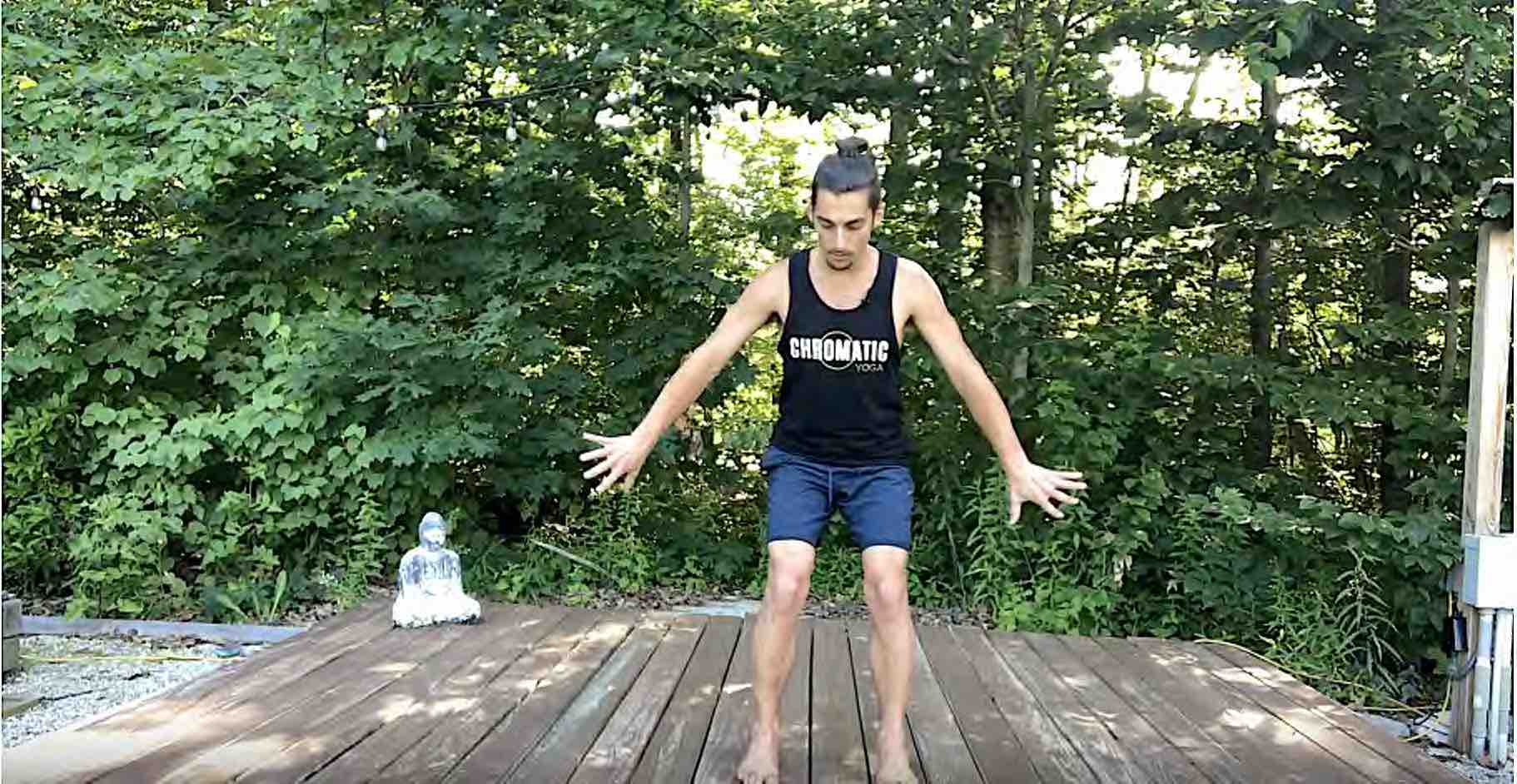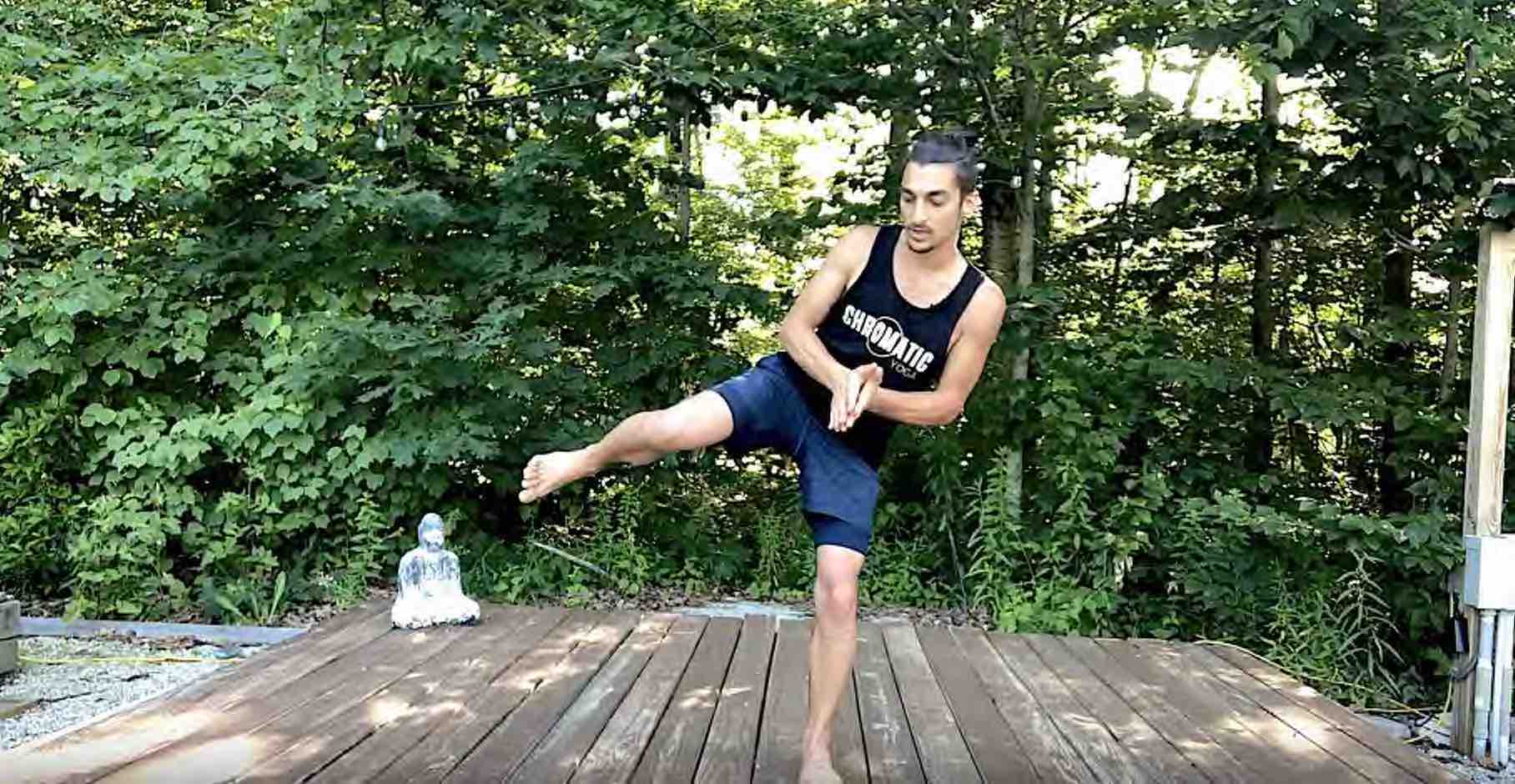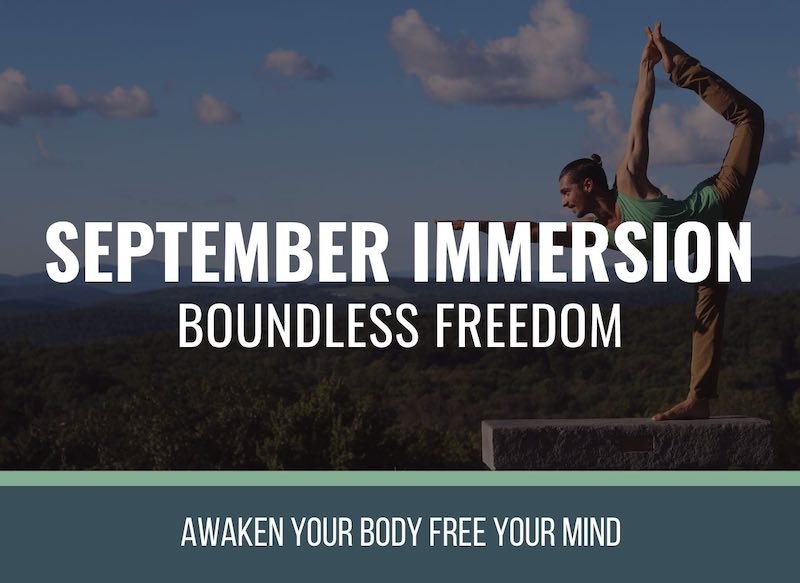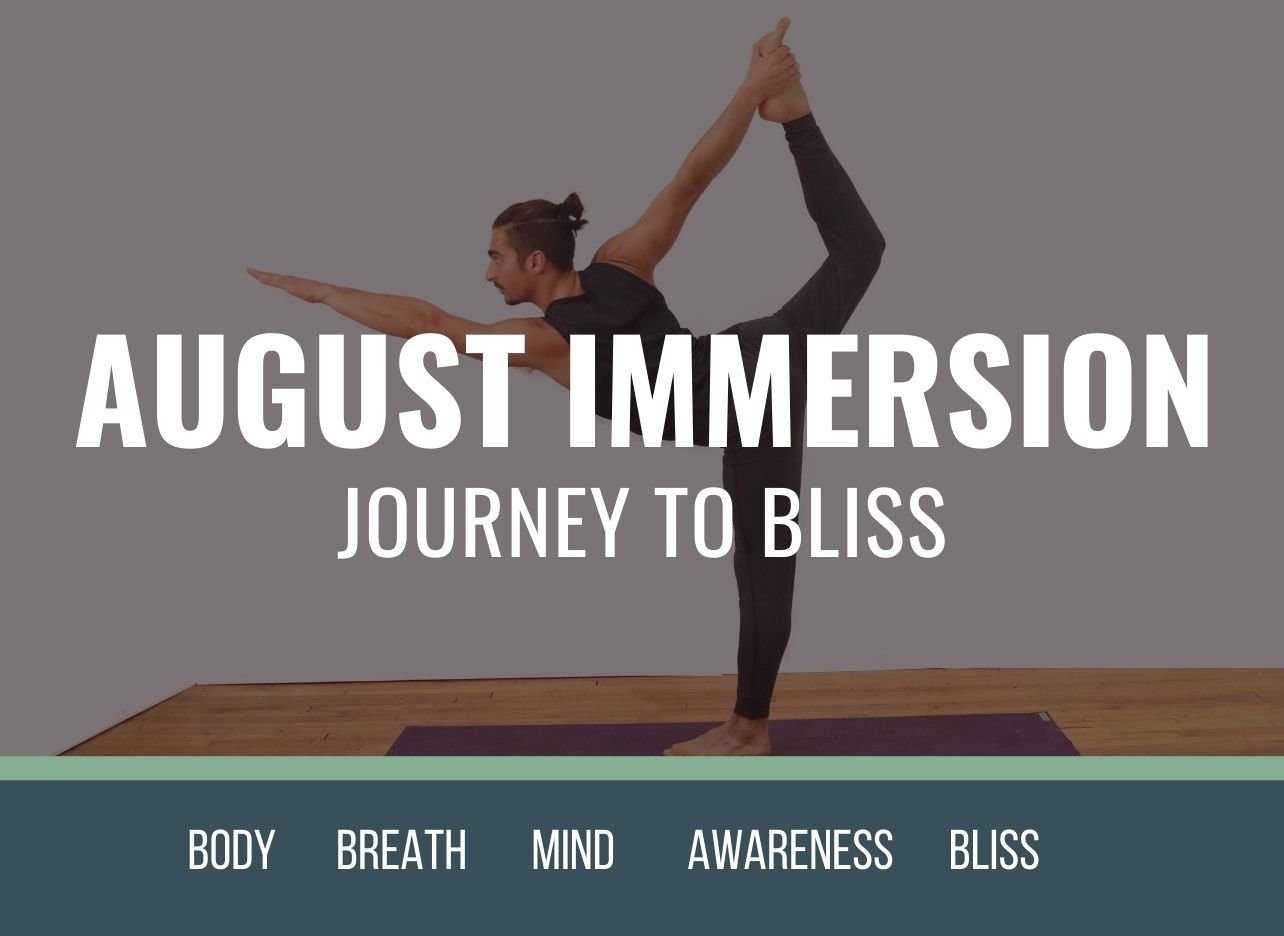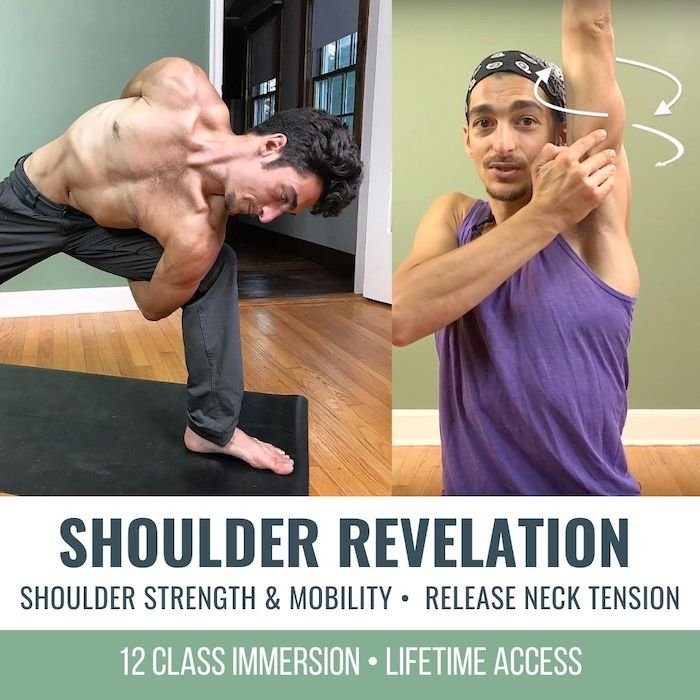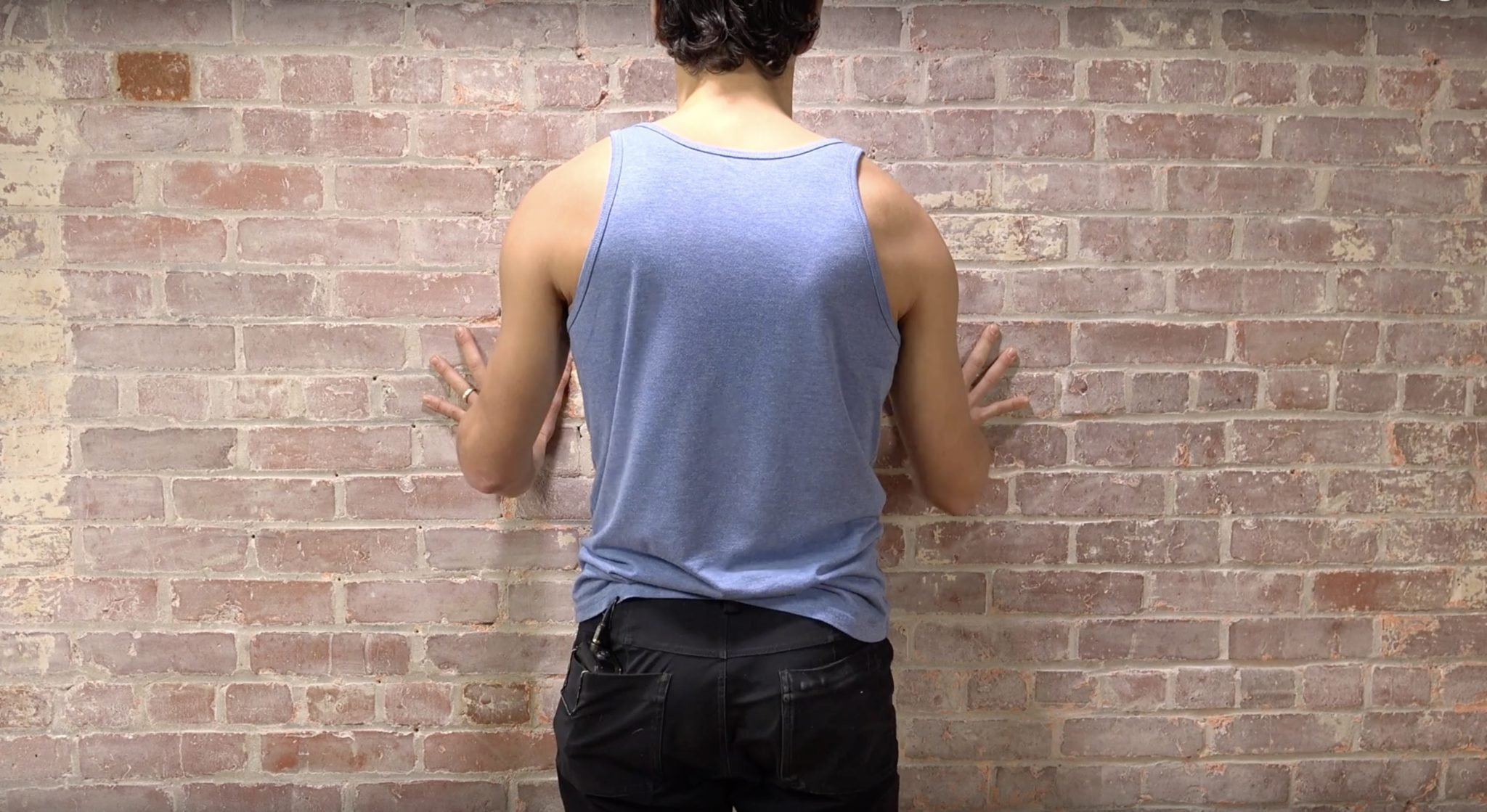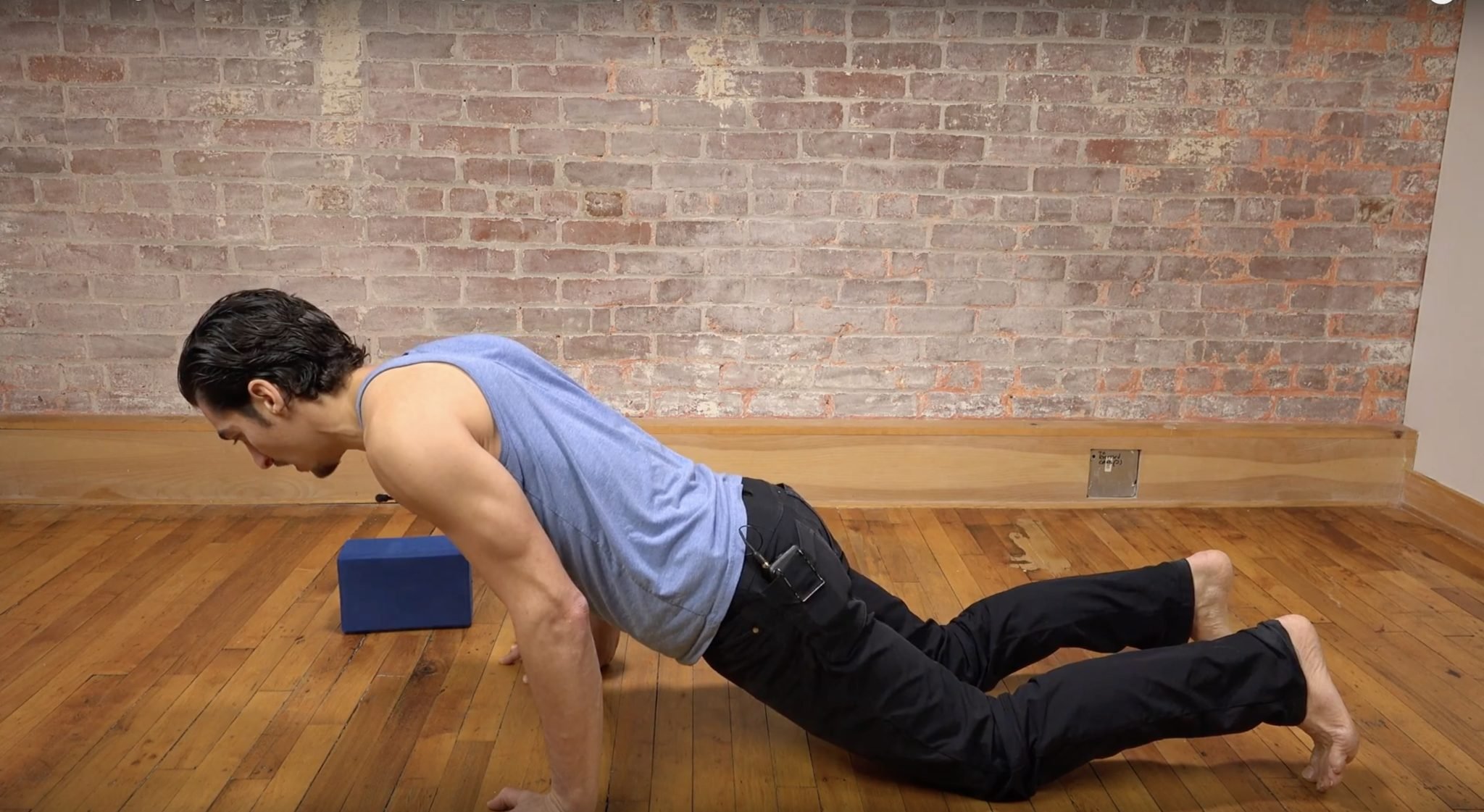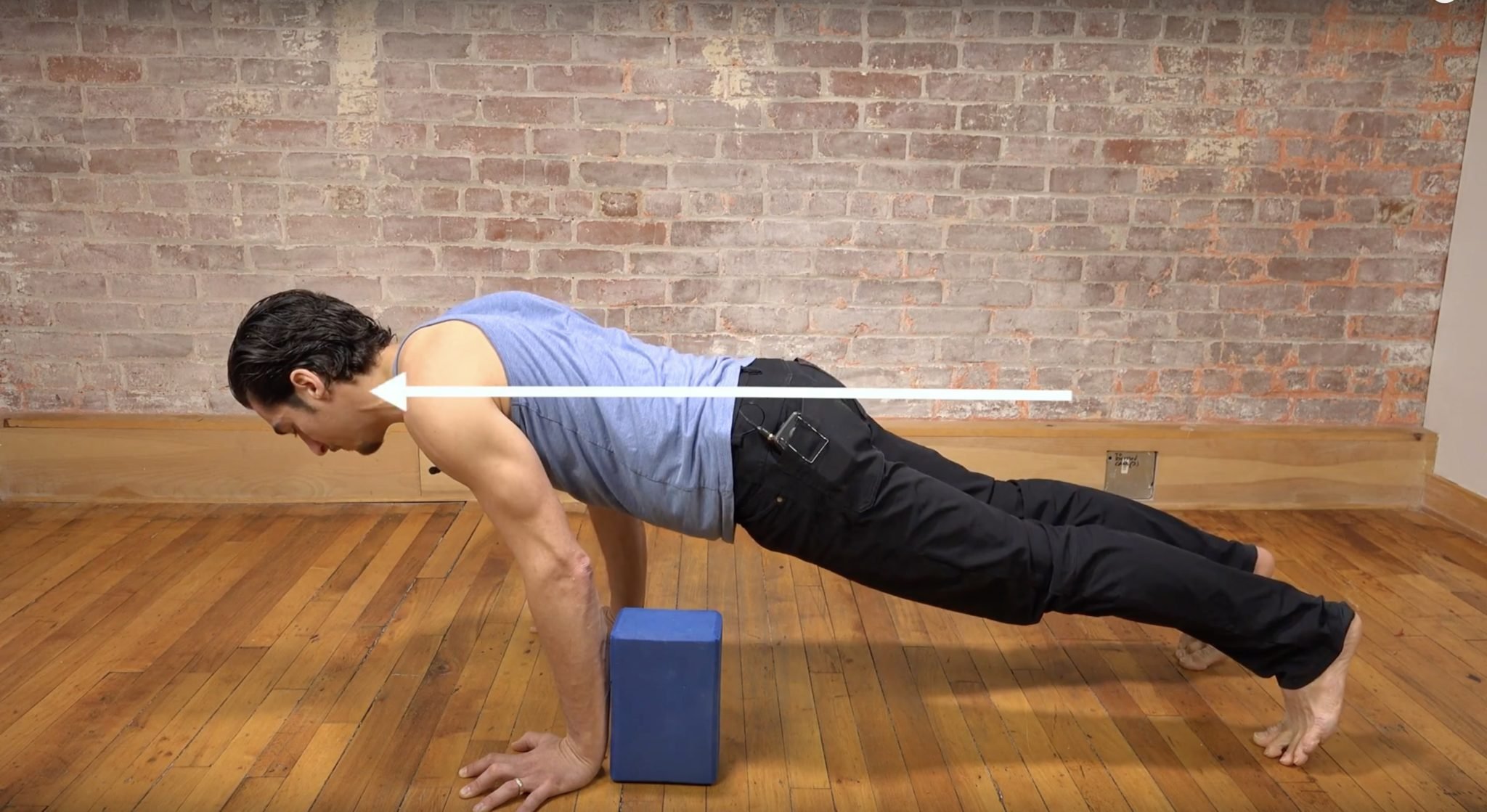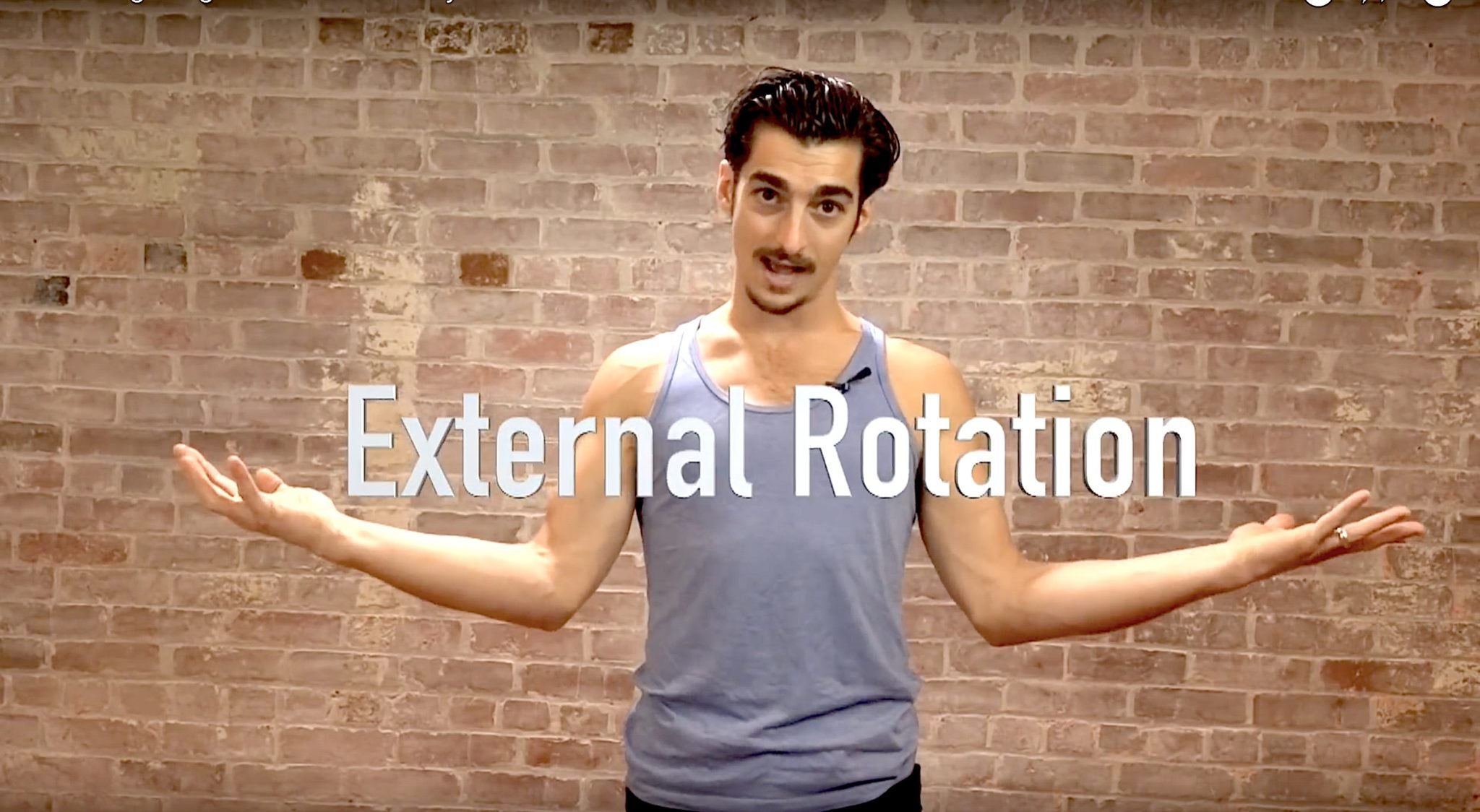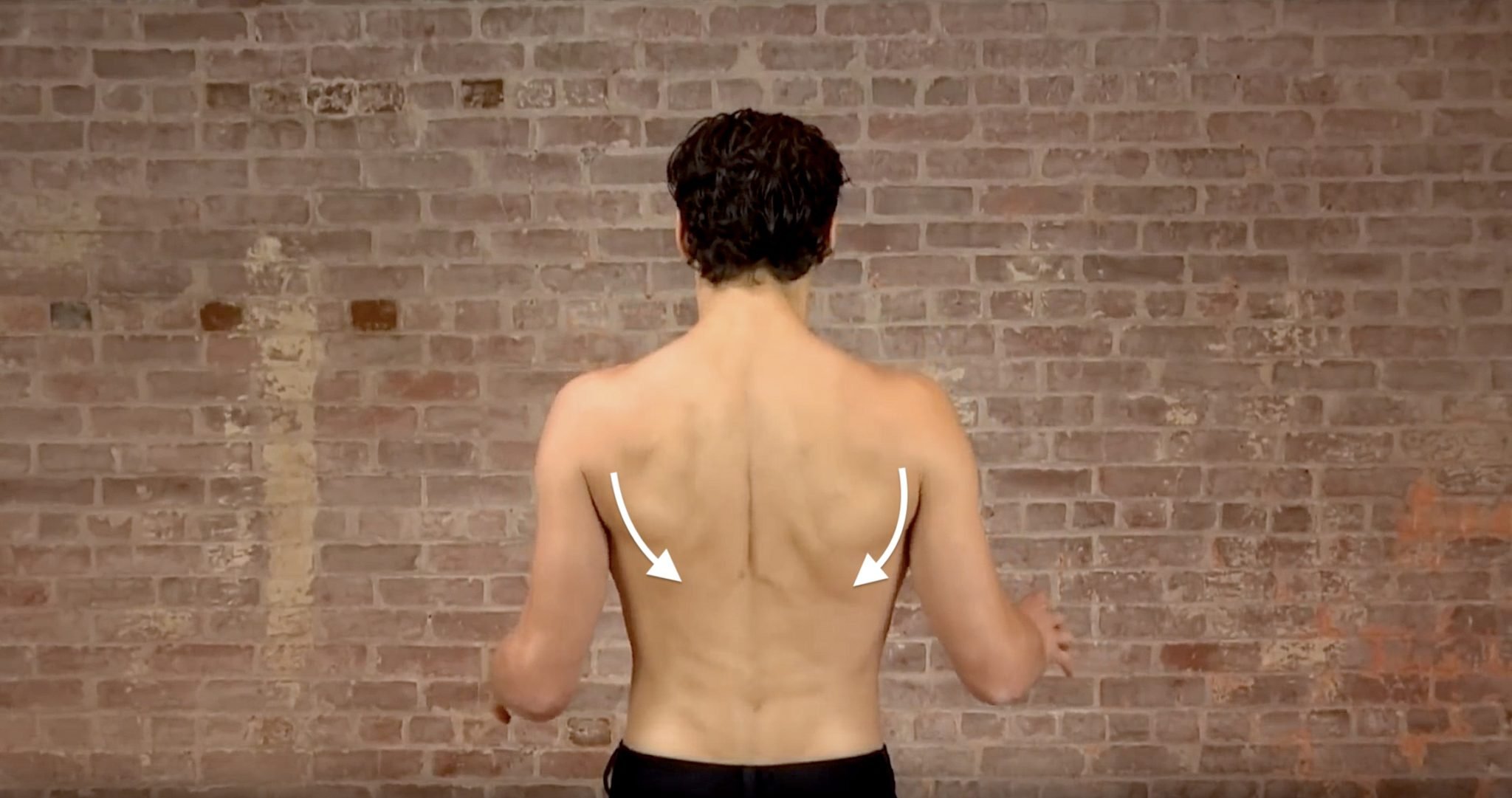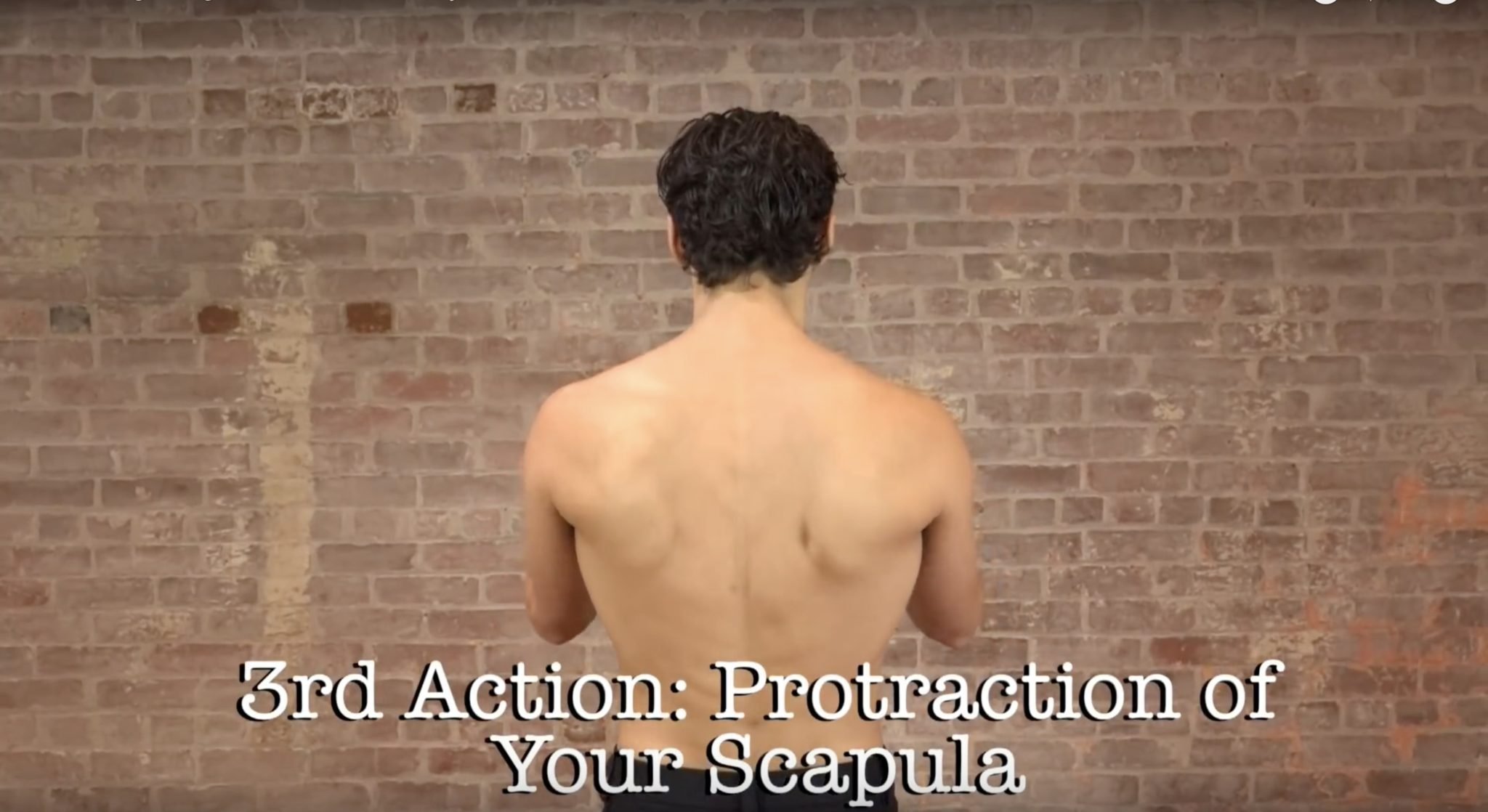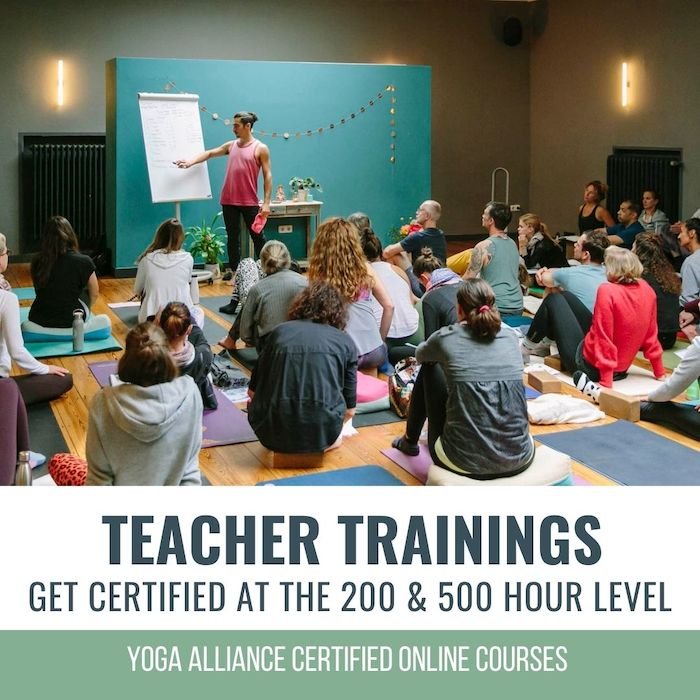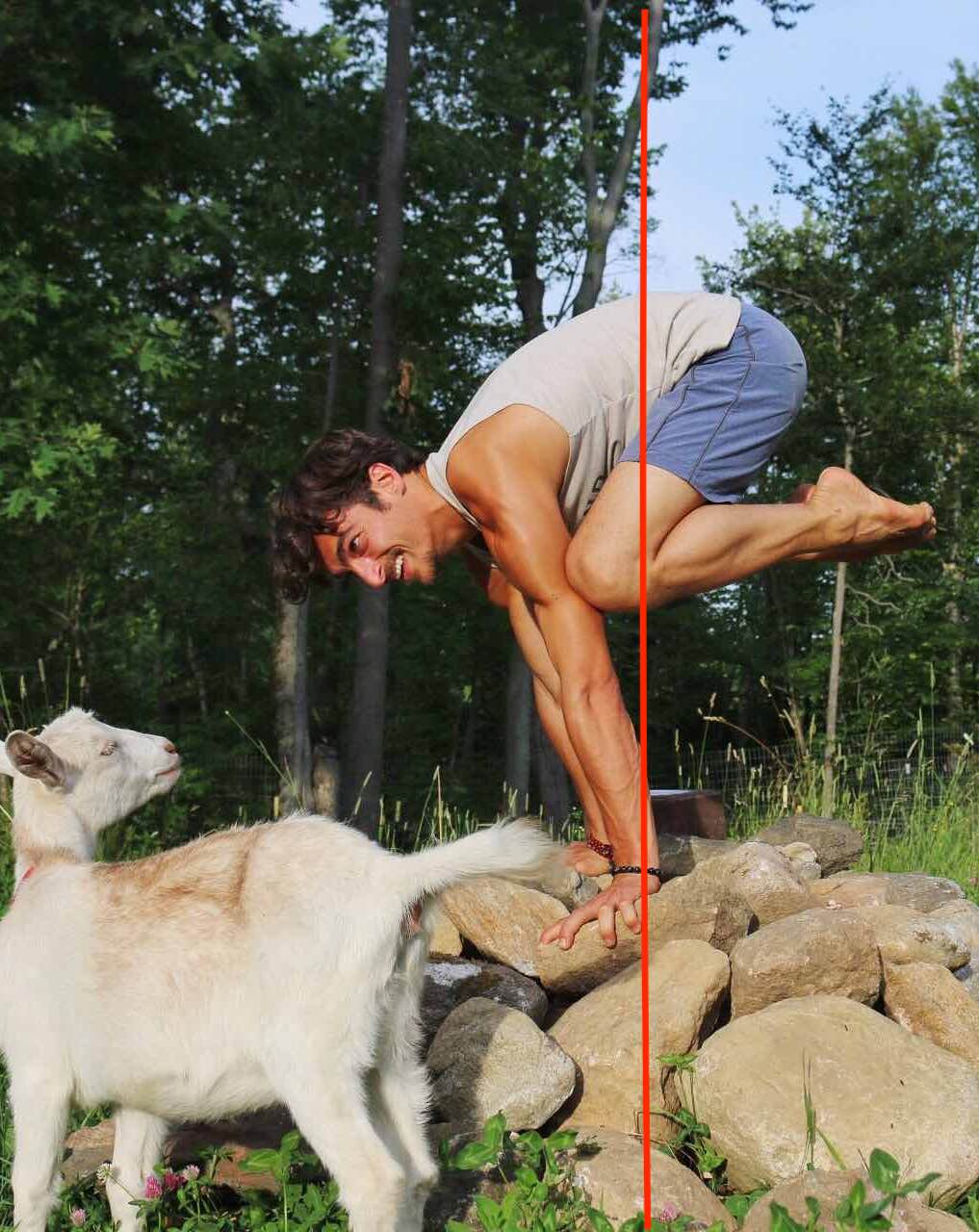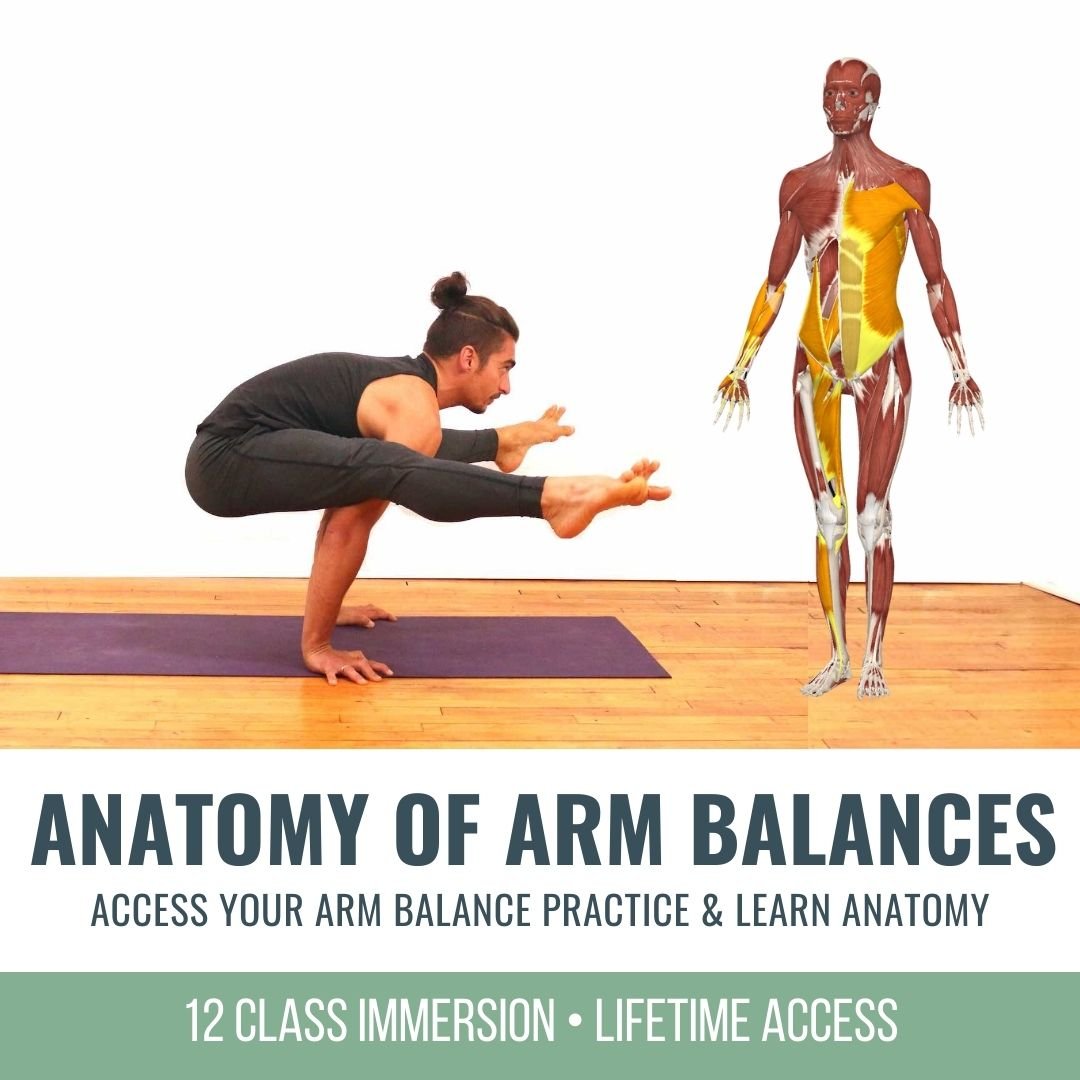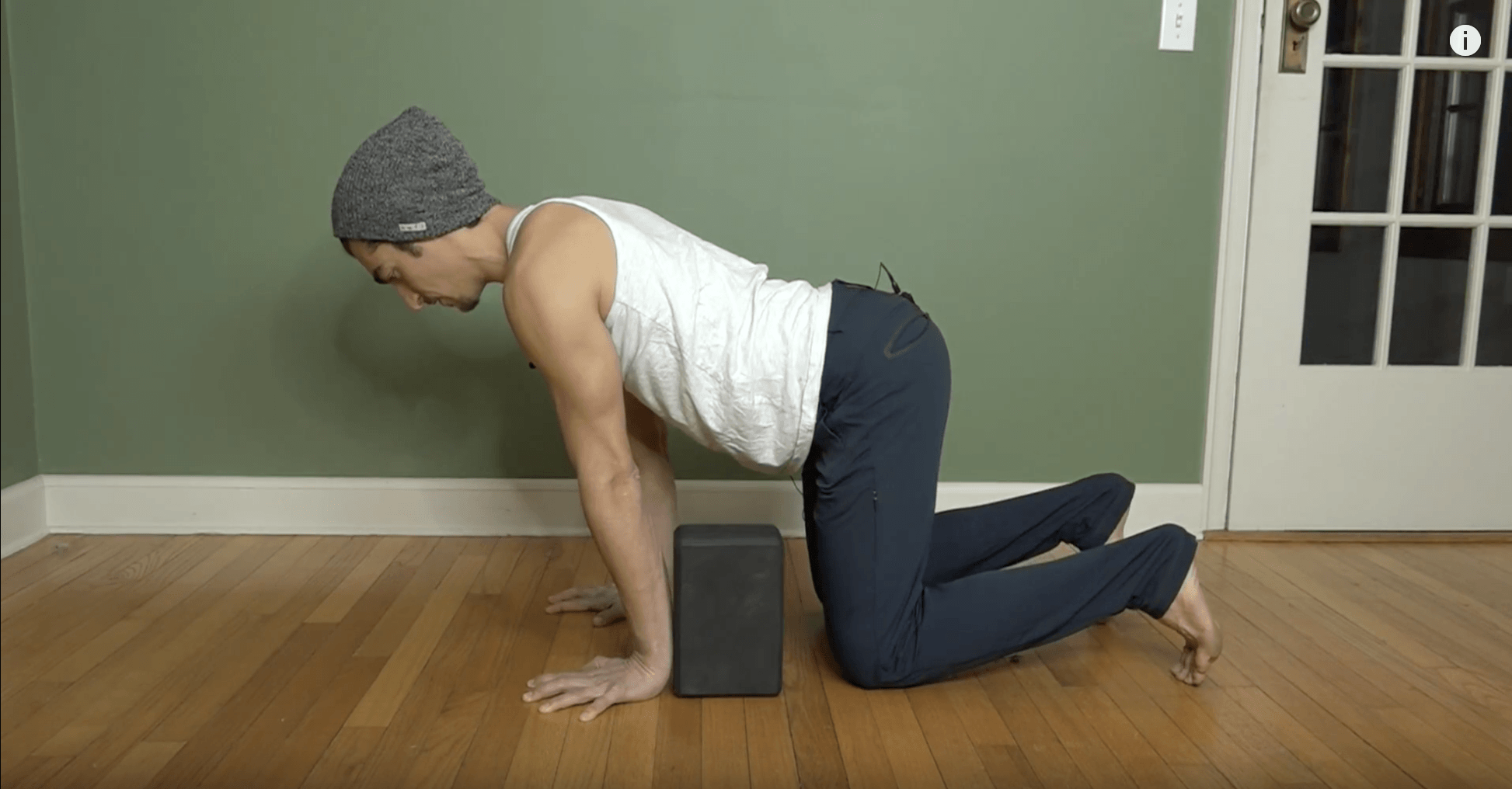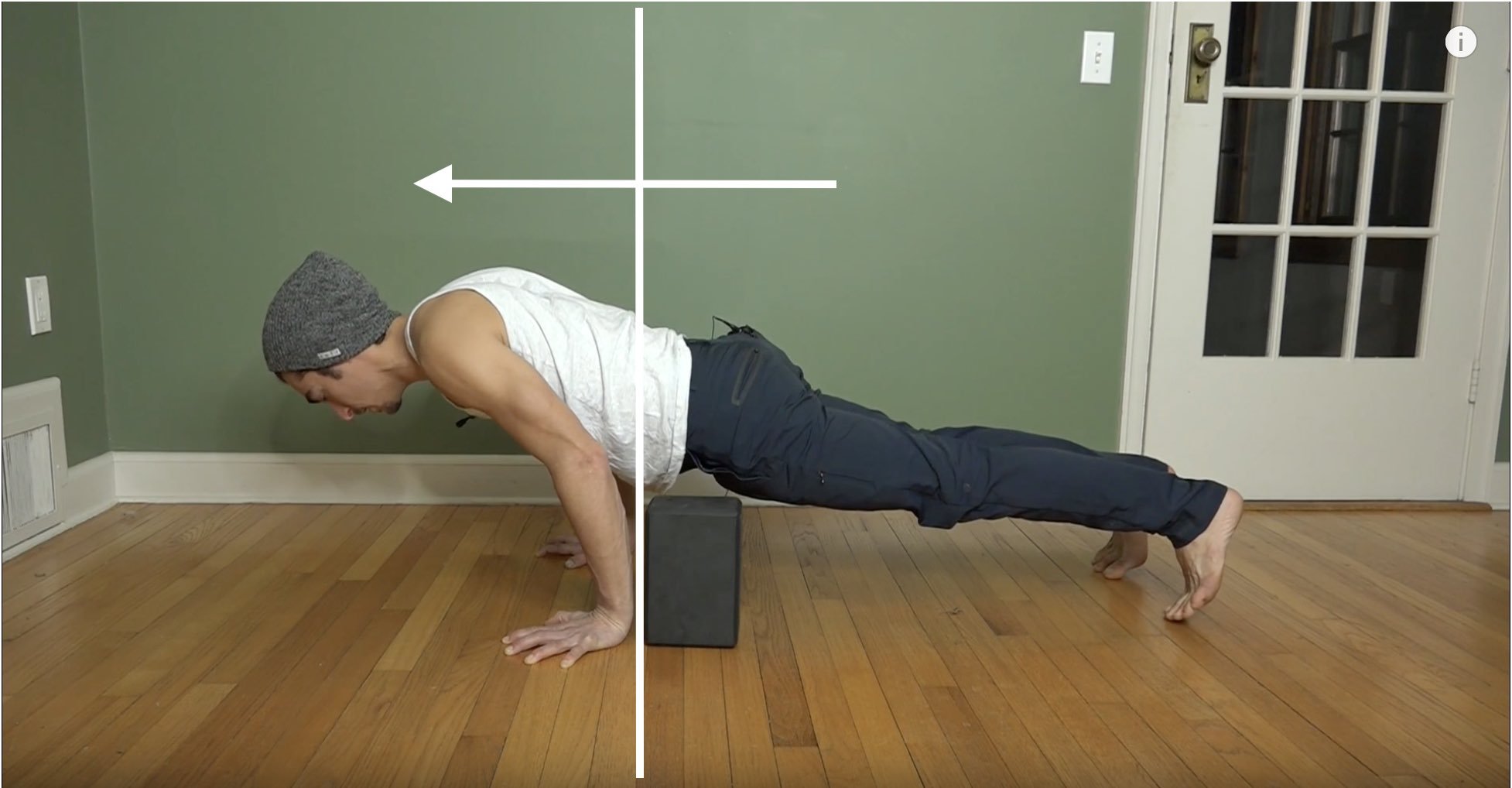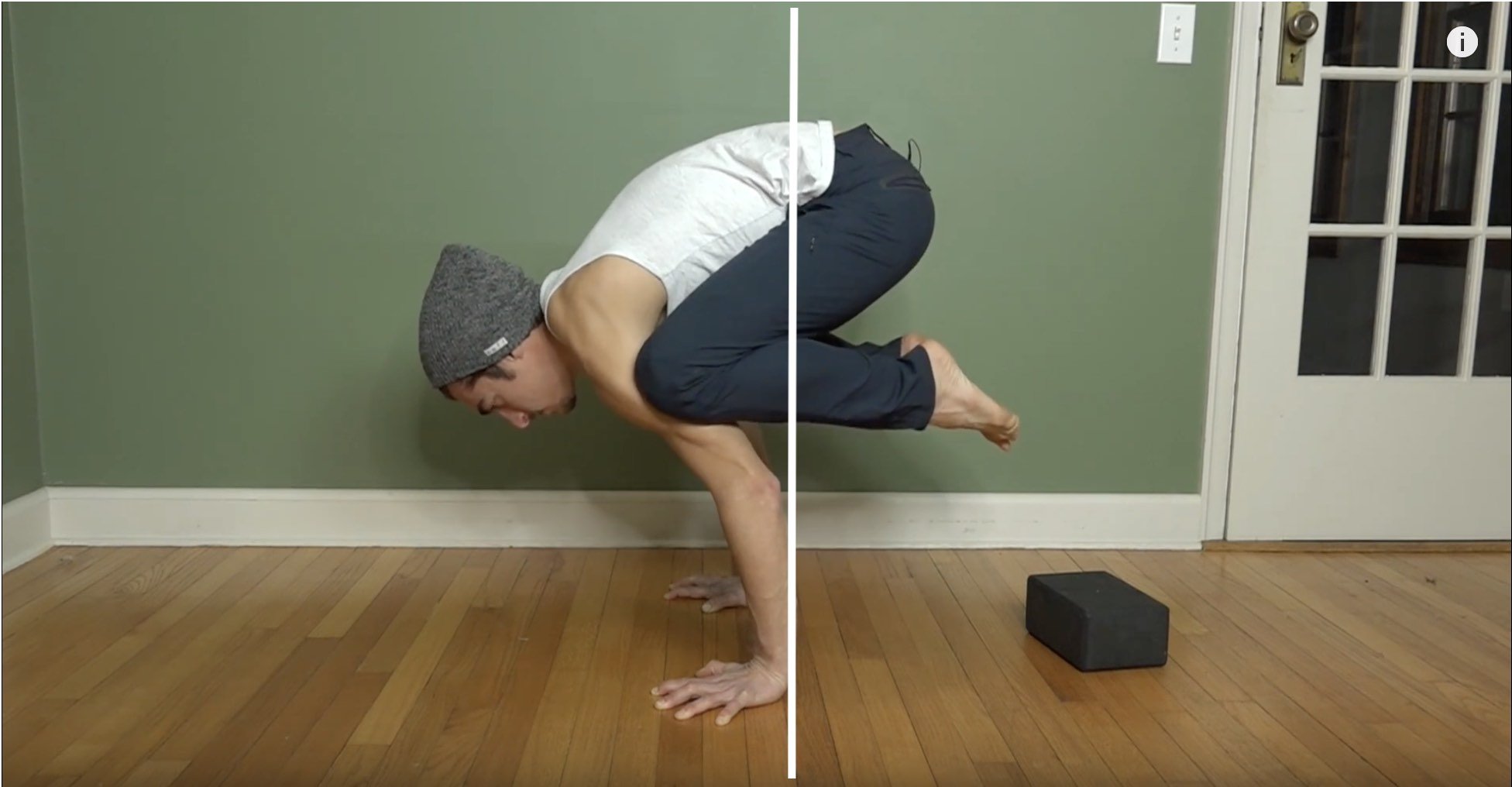6 Postures for Hips and Lower Backstretch6 POSTURES FOR HIPS AND LOWER BACK When we're interested in learning about postures that help us with our hips and lower back, it’s simply not good enough to find a video or practice that says that certain poses will help with...
Flying Pigeon
FLYING PIGEON
Key Actions to Balance in Flying Pigeon Pose
Flying pigeon
Flying Pigeon: Balance
Flying Pigeon is an exceptionally challenging pose for several reasons–strength, balance, flexibility for starters. Learning to balance on the hands requires tremendous strength in the flexors of the wrist, or what I call in my Handstand Training, “The Brakes”. Appropriately named because strength in the flexors of the wrist is what stops you from falling when you’re on your hands. You will hear me in the video talking about gripping the ground; this is the action that will turn on the brakes. On all fours, grip your fingers into the ground. With one hand, challenge the opposite hand by trying to pick up the fingers off the ground. Let’s say your right hand is on the ground; the right hand tries its best to dig its fingers into the earth. The left hand tries to pick the right hand’s fingers up. Switch roles. Reading about this won’t do anything so you will have to get it in your body to really get it…did it? Great! Let’s continue. Whenever you are on your hands in your yoga practice, maintain this type of activation to build strength in your brakes over time.
Flexibility
I still remember my first flying pigeon. I was in Elena Brower’s Anusara Yoga class. My hips were super tight back then. She had some great techniques to help us open our hips, many of which I still implement into my own practice and share in my online trainings , and immersions. In one of my recent articles on compass pose, I spoke on the topic that flexibility requires technique more than it does forcing repetitive stretches. To increase flexibility for flying pigeon, you need to target several muscle groups which I call the 4 Quadrants of the hips. All 4 quadrants (front, back, inside, backside) can be targeted within your yoga practice by activating them isometrically through the postures. If you have been practicing live or in person with me, then you are very familiar with this approach and if you haven’t felt the benefits, you will soon with repetition. To give you one example to try, get into warrior 2 and pull your feet toward each other like you are trying to bunch up the mat under your feet. This activates the inner quadrant of the back leg and the back quadrant of the front leg. Over time this will create health in these muscle groups which will directly increase your range of motion.
ARM BALANCES
Learn 12+ arm balances while expanding your knowledge of the body and increasing your body awareness. All classes are 75 minutes and ALL-levels appropriate
- Crow Pose, Side Crow, and variations
- Flying Pigeon, Koundinyasana 1 & 2
- Titibhasana, Bhujapidasana
- Handstand, Forearm Stand, and many more!
SALE PRICE: $198.00 $128.00
KEY TECHNIQUES & ORDER OF ACTIONS
THE SET UP
- Invert the ankle and drop the hip: This will help you get the foot high up toward the arm pit
- Evert to “clamp” the foot: this will help you avoid the sliding of the foot off the arm
- Lift opposite knee into arm pit: This will help you avoid the bruising on the triceps, however it requires a great deal of hip flexibility and may not be possible for you at first.
THE BALANCE
- Walk the hands forward: its necessary or you wont be able to balance
- Grip the ground: these are your brakes – they stop you from falling.
- Lean your body forward: This is what takes the weight out of your feet and hips and into your hands so that flight becomes possible
- Press front shin down into the arms: this will give you lift off so that you become lighter, if you are more flexible in the hips than this step is very important.
- Squeeze your back knee in: this gets your psoas and core active and keeps the weight of the pose forward.
HIPS & HAMSTRINGS
ONLINE YOGA IMMERSION
- 12 classes to increase flexibility of the hips and hamstrings
- Maximize your strength through range of motion
- Access your pose potential
- Release tension of hips and back
- Sensation-based practices
- Unlock and strengthen major muscle groups
- Active, passive, and isometric stretching
- Improve mobility and stability
- So much more!
$148.00 $128.00
Strength
When learning this posture, it is very helpful to pull the back knee into the chest. This will activate the hip flexors and lower abdominals which helps in two ways. First, it helps to keep the shin on the arm if the front hip is tighter. Second, it helps keep the weight of your body forward, which is required to maintain balance in the posture.
This posture can be deceptively challenging, so go easy on yourself if you find it incredibly difficult. Try these tips and remember that strength and flexibility require technique and repetition. Enjoy!
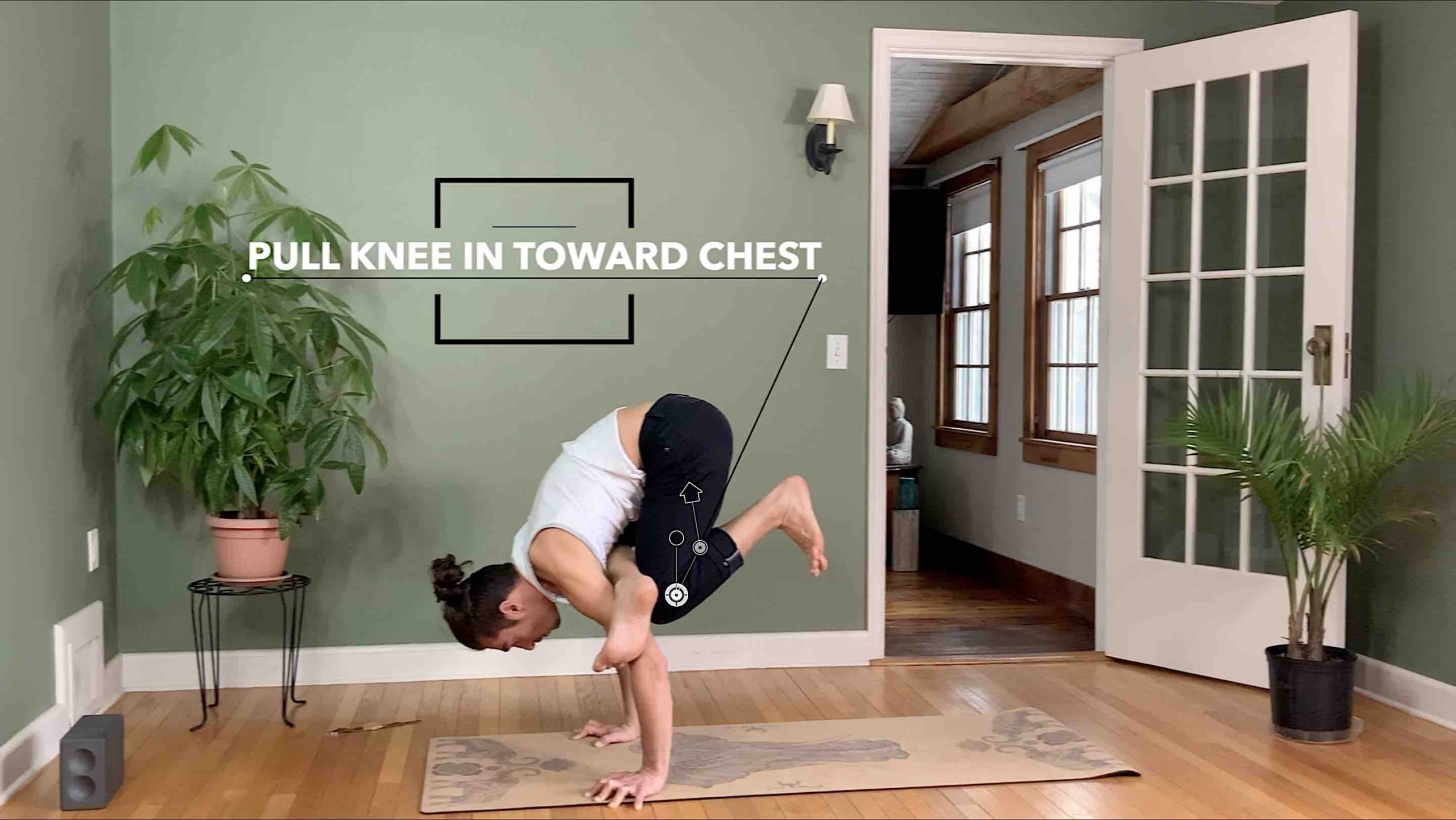
Continue Learning
6 Postures For Hips and Lower Back
Hips & Hanumanasana
Hips & HanumanasanasplitsHIPS & HANUMANASANA What a posture! Hanumanasana is such a beautiful expression of what is possible in our physical yoga practice. However, it’s not about “achieving” Hanumanasana but about the exploration of what is possible in terms...
Tripod Headstand To Crow Pose
Tripod Headstand to Crow for Controlled AccessinversionsTRIPOD HEADSTAND TO CROW POSE When exploring an inversion like Tripod Headstand, the shoulder muscles become part of the primary focus. Tripod Headstand on its own can be challenging enough, but adding a...
Shoulder Connections
Shoulder Connections 3 Postures for Increased Mobilityshoulder stabilitySHOULDER CONNECTIONS To increase mobility in our shoulders, we must first understand how they move, so we become more connected with their function and how they inform a variety of yoga postures....
Deep Dive Into Chaturanga
Deep Dive Into Chaturanga Shoulder Action Controversyshoulder stabilityDEEP DIVE INTO CHATURANGA Earlier this week, Matt posted a video on his Instagram page highlighting the shoulder blade movement that takes place in Chaturanga—moving from protraction to retraction....
Strengthen Your “Shelf” For Mayurasana
Strengthen Your "Shelf" for Mayurasana How to Prepare for This Unique Arm BalanceDELTOIDSSTRENGTHEN YOUR "SHELF" FOR MAYURASANA Let’s note that muscle groups do not work in isolation: The activation of accessory muscles, although not necessarily the focal point, are...
NEW RELEASES
-

10 day handstand payment plant
$99.00 / month for 3 months Sign Up Now -
Sale!
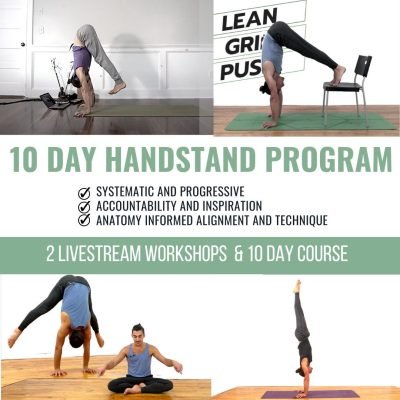
10 Day Handstand
$297.00 Add to cart -
Sale!
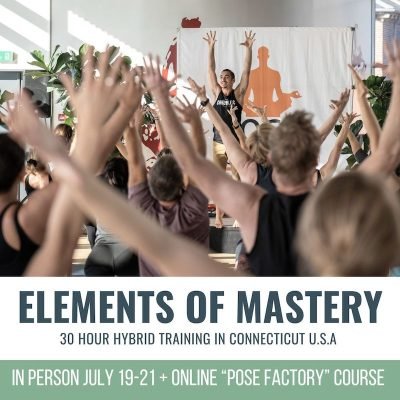
Elements of Mastery 30 Hour Hybrid 2024
From: $100.00 / month for 9 months Select options -
Sale!
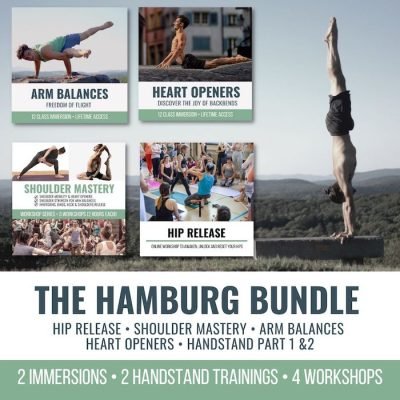
hamburg bundle
$482.40 Add to cart -
Sale!
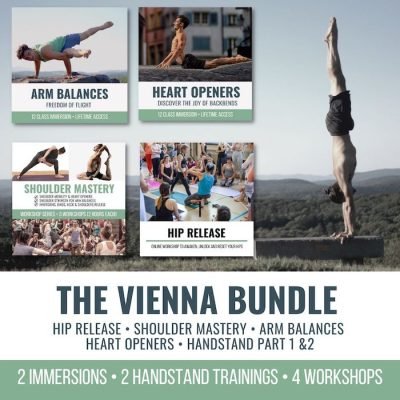
VIENNA BUNDLE
$482.40 Add to cart -
Sale!
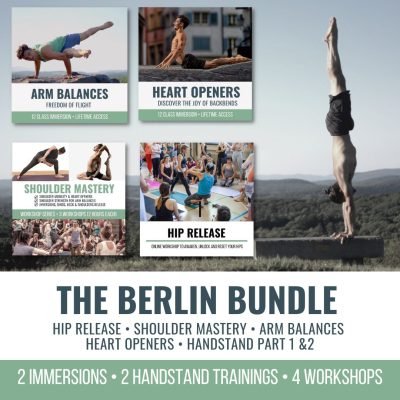
Berlin Bundle
$482.40 Add to cart -
Sale!
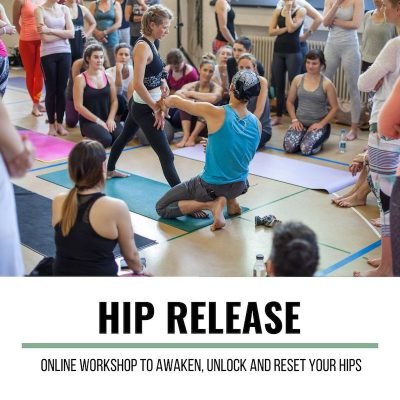
HIP RELEASE WORKSHOP
$34.00 Add to cart -
Sale!
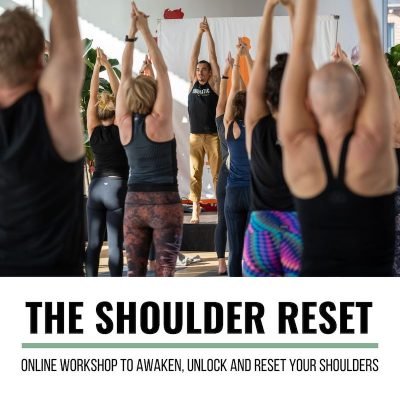
THE SHOULDER RESET ONLINE YOGA WORKSHOP
$28.00 Add to cart
THE FREE TECHNIQUE PACK
When You Subscribe, You Will Get Instant Access to
- the Technique Pack: 15 yoga pose breakdowns
- exclusive online course discounts
- exclusive blogs and videos


![Archna Mohan chromatic yoga backbend techniques: 12 classes [backbend technique to relieve back pain "bowing the spine']](https://www.theyogimatt.com/wp-content/uploads/2021/10/Archna-Mohan-chromatic-5.jpg)
